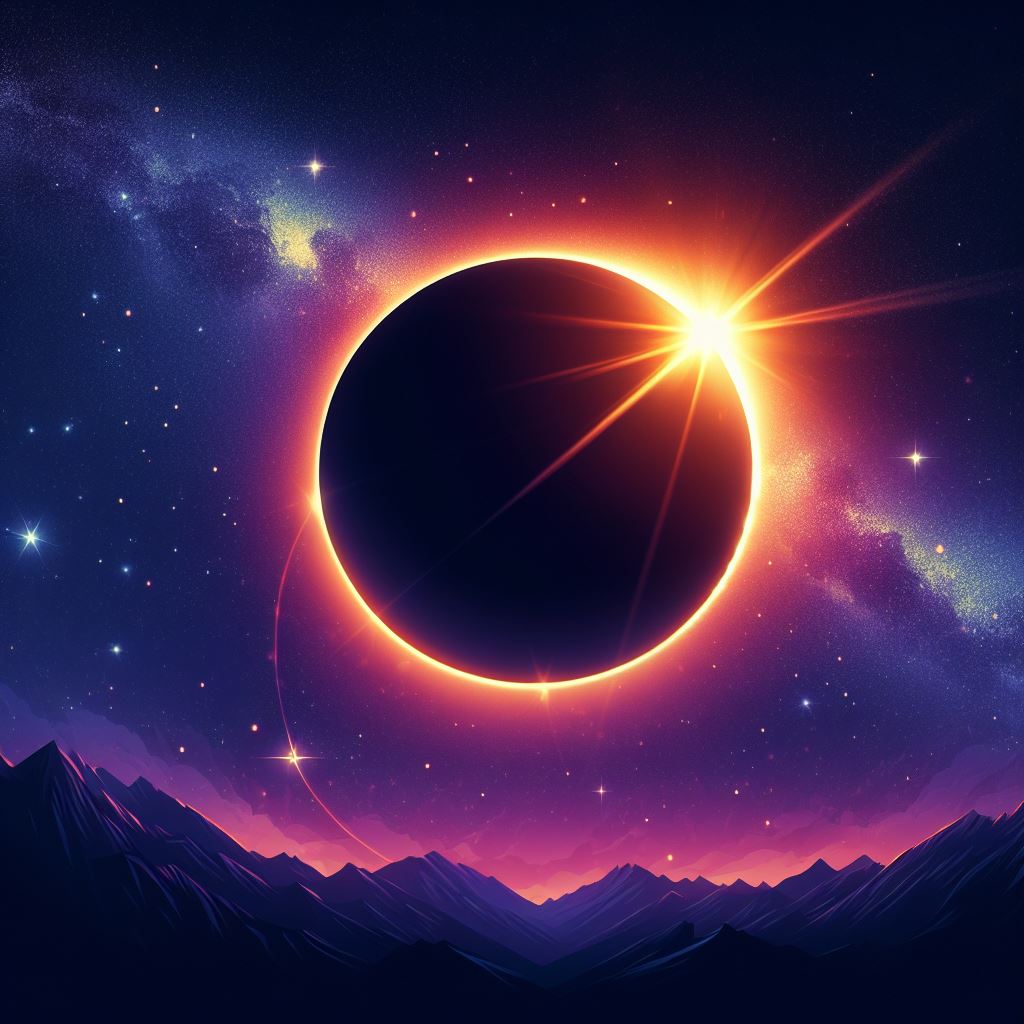Welcome to the captivating world of astronomical phenomena. These celestial events, from solar and lunar eclipses to meteor showers and comets, offer us a glimpse into the vast mysteries of the universe. They are the physical processes that involve celestial objects such as stars, planets, galaxies, and other entities existing in the observable universe. But what exactly are these astronomical phenomena, why are they significant, and how can we observe them? In this comprehensive guide, we will unravel the secrets of the cosmos, explore the beauty of these celestial spectacles, and learn how they have shaped our understanding of the universe.
Astronomical Phenomena Definition
Astronomical phenomena are observable events that occur in the sky and beyond. They are the physical processes that involve celestial objects such as stars, planets, galaxies, and other entities existing in the observable universe.
These phenomena range from common occurrences like the rising and setting of the Sun, to rare spectacles such as solar and lunar eclipses. Solar eclipses occur when the Moon passes between the Earth and the Sun, obscuring the Sun’s light and casting a shadow on Earth. On the other hand, lunar eclipses happen when the Earth comes between the Sun and the Moon, causing the Earth’s shadow to fall on the Moon and darken it.

Meteor showers are another type of astronomical phenomena that light up the night sky as debris from comets burn up in the Earth’s atmosphere. These showers are named after the constellation from which they appear to originate and can be a spectacular sight for skywatchers.
Comets, often described as ‘dirty snowballs’, are icy bodies that originate from the outer regions of the solar system. As they approach the Sun, they heat up and start to outgas, developing a distinctive tail that points away from the Sun.
Understanding these phenomena not only satisfies our curiosity about the universe but also has practical applications. For instance, they help us calibrate our calendars, navigate our ships, and even predict climate patterns. Indeed, the study of astronomical phenomena has been fundamental to the development of our civilization and will continue to shape our understanding of the universe.
Notable Astronomical Phenomena
Astronomical phenomena have fascinated humanity for millennia, serving as both a source of wonder and a tool for scientific discovery. From ancient times to the present day, these celestial events have shaped our understanding of the universe and our place within it.
In ancient times, civilizations around the world observed and recorded astronomical phenomena, often attributing them to divine intervention. For instance, the ancient Chinese meticulously documented solar eclipses, with records dating back to 2137 BCE. The ancient Greeks, too, were avid sky watchers, using their observations of lunar eclipses to refine their calendars and predict future eclipses.

In more recent history, the 1919 solar eclipse stands out as a pivotal moment in the field of astronomy. Observed by a team led by Sir Arthur Eddington, this eclipse provided the first experimental confirmation of Einstein’s theory of general relativity. The bending of starlight around the Sun, as predicted by Einstein, was observed, forever altering our understanding of gravity and space-time.
Halley’s Comet, visible from Earth every 75-76 years, has been a source of fascination for over two millennia. Its most recent appearance in 1986 was a global event, with millions of people around the world turning their eyes skyward to witness this rare spectacle.
In the realm of meteor showers, the Perseids and the Leonids are annual events that captivate observers. The Perseids, peaking in August, are remnants of the comet Swift-Tuttle, while the Leonids in November originate from the comet Tempel-Tuttle.
Fast forward to the 21st century, we’ve witnessed some truly remarkable astronomical phenomena. The transit of Venus in 2004 and 2012, an event that won’t occur again until 2117, allowed scientists to measure the size of the solar system using methods first devised in the 18th century. More recently, the “Great American Eclipse” of 2017 was the first total solar eclipse visible from the contiguous United States since 1979.
Looking back at these notable astronomical phenomena, it’s clear that our understanding of the universe is shaped by both the predictable cycles of celestial bodies and the unexpected discoveries that challenge our assumptions. As we continue to observe and study these phenomena, we can look forward to unraveling more secrets of the cosmos.
How to Observe Astronomical Phenomena
Observing astronomical phenomena is a rewarding experience that connects us with the cosmos. However, it requires some preparation and knowledge. The best times to view these events often depend on their nature and your location. For example, meteor showers are typically best viewed after midnight when the sky is darkest.
When observing phenomena involving the Sun, such as solar eclipses, safety is paramount. Always use appropriate protective equipment like solar viewing glasses to avoid damaging your eyes. For other celestial events, a good pair of binoculars or a telescope can enhance your viewing experience.
It’s also beneficial to understand the basics of stargazing. Familiarize yourself with major constellations, as they can help you navigate the night sky. There are numerous apps and websites available that can guide you.
Lastly, remember that patience is key. Observing astronomical phenomena often involves waiting for the right moment. But when that moment arrives, the sight can be truly breathtaking.
The Future of Astronomical Phenomena
As we look to the future, the field of astronomy promises a wealth of exciting discoveries and celestial events. The advancement of technology and our increasing ability to venture into space means that we are poised to observe astronomical phenomena with unprecedented detail and frequency.
In the coming years, we can expect to witness a variety of celestial events, from meteor showers and solar and lunar eclipses, to the return of notable comets. For instance, the anticipated return of Halley’s Comet in 2061 is already generating excitement among astronomers and skywatchers alike.
Moreover, the ongoing search for exoplanets – planets outside our solar system – is likely to yield fascinating results. With the development of new detection methods, we may soon find planets that could potentially harbor life.
In addition, the study of dark matter and dark energy, two of the greatest mysteries of the cosmos, will continue to be a major focus in the field of astronomy. As we improve our observational capabilities, we move closer to unraveling these cosmic enigmas.
For those just starting their journey into astronomy, investing in one of the best telescopes for beginners can greatly enhance the experience of observing these phenomena.
Indeed, the future of astronomical phenomena is a testament to human curiosity and our relentless pursuit of knowledge. As we continue to gaze at the stars, who knows what secrets of the universe we will uncover next?
Conclusion
As we delve into the captivating world of astronomical phenomena, we are constantly reminded of the vastness of the cosmos and our place within it. The question “What is astronomy?” goes beyond the study of celestial objects. It’s about understanding our universe, unraveling its mysteries, and satisfying our innate curiosity. From observing the predictable cycles of celestial bodies to witnessing rare celestial spectacles, each astronomical phenomenon brings us one step closer to answering the fundamental questions about our universe. So, as we continue to gaze at the stars and explore the cosmos, let’s remember that every observation, every discovery, no matter how small, contributes to our collective knowledge and brings us closer to understanding the secrets of the universe.
FAQs
What Is Astronomical Phenomena?
Astronomical phenomena are observable events that occur in the sky and beyond. They are the physical processes that involve celestial objects such as stars, planets, galaxies, and other entities existing in the observable universe.
What Are Some Examples of Astronomical Phenomena?
Examples of astronomical phenomena include common occurrences like the rising and setting of the Sun, to rare spectacles such as solar and lunar eclipses. Meteor showers light up the night sky as debris from comets burn up in the Earth’s atmosphere, while comets themselves are icy bodies that develop a distinctive tail as they approach the Sun.
How Can I Observe Astronomical Phenomena?
Observing astronomical phenomena requires some preparation and knowledge. The best times to view these events often depend on their nature and your location. For example, meteor showers are typically best viewed after midnight when the sky is darkest. When observing phenomena involving the Sun, such as solar eclipses, safety is paramount. Always use appropriate protective equipment like solar viewing glasses to avoid damaging your eyes. For other celestial events, a good pair of binoculars or a telescope can enhance your viewing experience.

